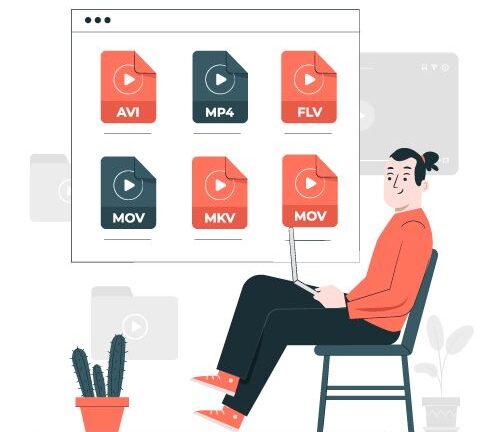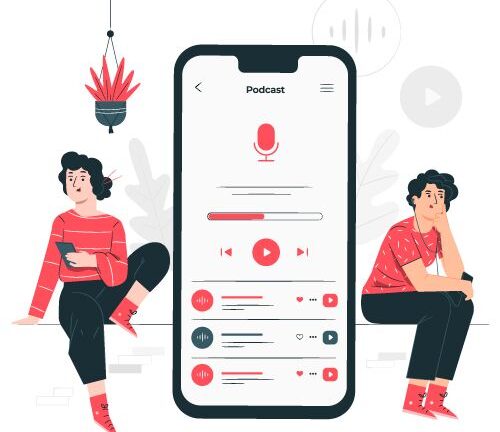Whether you’re trying to understand more about digital marketing in order to boost your business results or you’re a professional looking to enhance your skill set, you’re in the right place.
We’ll deconstruct and rebuild every single question you could have regarding the best practices in data marketing. Explain the tactics as if our parents asked us what we’re doing as marketers. Provide you with great examples and help you have a better understanding of this industry’s strategies.
So, what IS content marketing?
Content marketing encompasses all the means by which a business is providing their audiences with coherent, consistent content they need. Instead of disrupting advertising, content marketing provides valuable information, answers important questions, satisfies needs and helps overcoming challenges.
The level of engagement is beyond any other marketing tactic, as its purpose is to fill in the blanks between what the businesses want to sell and what the customers are looking for.
In the words of some marketers we really appreciate for pushing the industry so far:
“Content marketing is a long-term strategy that focuses on building a strong relationship with your target audience by giving them high-quality content that is very relevant to them on a consistent basis.” – Neil Patel
“Content marketing is a strategic marketing approach focused on creating and distributing valuable, relevant, and consistent content to attract and retain a clearly defined audience – and ultimately, to drive profitable customer action.” – Joe Pulizzi, CMI
The shapes of content marketing
Content marketing comes in a variety of shapes, styles and sizes, as there is no recipe to fit them all. However, the more you’re digging into different types of content, the more you’ll grow both business-wise and as a brand. So let us sketch some of these shapes for you:
Written content marketing

Some may still sell the idea of content marketing as corporate blogging. And, while blogging is a form written content marketing may have, it’s often misunderstood or misguided:
- Think about those brands whose only messages are about THEIR products, THEIR new launch, THEIR events, THEIR awards. “Because a lot of you have asked how we’re doing…”
- Think about all the branded content no one ever read, not to mention no one ever converted for,
- Think about all the corporate blogs Google never showed you when you conducted an intended search.
So, yes, blogging is a part of written content marketing, but there are so many others.
Pay attention to the product descriptions that actually help you decide between two similar products. To those landing pages that not only flash your eyes, but keep you engaged and reading.
To the press releases that actually improved your knowledge and kept you updated with different subjects of interest. To the long-form guides and tutorials that helped you fix things around the house or create your own diy designs.
To the FAQs pages that provided you the information you were looking for, without having to be waiting for an employee to return your call. To the eBooks, white papers and case studies brands are giving back to the most loyal of their audiences.
Video content marketing

Video blogs or vlogs became more and more popular in the past few years. And so did studio production, on-location videos, demos, promos, event footages or animation videos.
Other forms of video content marketing are already well established, if not obsolete; we’re talking about video interviews or vox populi series.
And others are just getting started, such as virtual and augmented reality videos.
Infographic content marketing

According to Visme, one of the greatest resources for visual communicators, 67% of B2B marketers created infographics in 2020 and the last four years show an ascending trend. Another statistic, conducted by Infographic World, highlights the following:
- 74% of marketers rely on visuals in their social media messaging,
- 56% of companies queried use infographics,
- 84% who’ve used them consider the medium effective.
Aside from infographics, there are also other forms of graphic content marketing businesses can use: custom illustrations, call to action graphics.
But graphics also include some tactics, such as content formatting, wireframing and even the development of a website mockup.
Social media content marketing

We could talk for hours about social media, but we’ll be deconstructing it in further articles. For now, let’s resume to mention the user generated content, the hashtag campaigns, the complementary social posts, the contests, the giveaways, the quizzes and surveys, as social media content marketing. Briefly, just about everything.
Audio content marketing

We do ingest information in all of its forms and embrace the novelty. While audio content marketing is not entirely new to marketers and brands, there are some forms of it which became more and more popular in the recent period.
Let’s take podcasts, for the sake of popularity. Whether they’re educational or meant to entertain, they’re a great way to engage the audience without monopolizing its full attention. There are people listening to podcasts while cooking, driving, jogging, shopping, cleaning the house or following a personal care routine, precisely because it’s only engaging the hearing.
Webinars are also so much popular since the coronavirus, when they became the very best way to inform, educate and engage brands’ public.
Another form of audio content marketing are recorded interviews. Basically, anything you can consume in this format and it’s related to a brand can be tagged as audio content marketing.
Paid Ad Content Marketing

When it comes to paid ads and performance marketing, the content you’re promoting is like a business card for your brand. That’s why it’s of utmost importance to find the right balance between the PPC specialists who set, test and optimize your campaigns and a great copywriter, who is capable not only to follow their brief, but to think about new ways to attract customers, through content.
There are a lot of tactics, like using emotional triggers or optimizing your CTAs, using PPC and SEO data to shape your copy and finding the right and most performant keywords to include in your messages, so there’s always room for improvement when it comes to paid ad content marketing.
Distribution channels for content
One must really know his audience in order to address the right messages through the right channels. Are your consumers more active on social media or are they heavy users of search engines? Are they more likely to consume audio content, written content, graphic content or video content? To what extent are they using search engines for informational queries?

Know your audience. And give them what they need, through the channels they’re used to.
1. Organic traffic (SEO)
Search engine optimization (SEO) is the process of developing new content and/ or optimizing existing content, in order to achieve organic traffic and great rankings in the SERPs. In other words, your business content should respond to various searches (through simple and long tail keywords) in order to be found in the first rankings and also be accessed by as many users.
Generating organic traffic is achieved through SEO. In effect, site visitors click on your content they found in organic SERPs – and it all started with a search query.
The content you publish on your site is indexed by search engines and served to users, and it doesn’t have to just be blog articles. Video content and infographics – anything ungated, really – also appear in SERPs, granting you more exposure and the chance to funnel traffic to your site.
2. Paid search traffic (SEM)
Referred also as paid search or PPC (pay per click), SEM (search engine marketing) aims to reach a higher visibility of a website in the search results pages (SERPs). Unlike SEO, this digital strategy is paid, although it serves the same main purpose – visibility. Another difference is that, while SEO can bring long-term, stable results, SEM is highly effective when it comes to short term objectives. Also, it can be far more ROI-focused, as it includes search paid ads.
Displayed at the top of the results pages and sometimes also at their bottom, these ads are great for brand exposure. Moreover, as they have a priority for being paid for, these results “steal” the organic traffic your competitors may be more advanced at.
3. Email marketing
The name speaks for itself. Email marketing refers to a form of direct marketing communication, via emails. Newsletters are very effective when it comes to commercial or fundraising communication, as it can both address business promotion, as well as customer loyalty strategies.
Pointed, a business has the opportunity to segment and target the audience according to the funnel stage they’re framed and hook them with highly relevant content to respond to their needs.
A question that concerns most marketers, as the other channels arised in the last years, targets the efficiency of email marketing in 2020/ 2021. As everconvert.com points out, “email marketing still remains the best and most effective method of attracting and retaining customers and can keep your business afloat, or propel it into the stratosphere, with a potential ROI of up to 4400%”.
4. Social media marketing
Again, this channel is self explanatory. It’s a great way to reach your customers and engage with them in a very personal manner. Whether you use it to promote your company’s culture, to create awareness around your brand, to go viral with your products or services, social media marketing allows you to customize your communication for each environment you and your audience connect.
SMM uses different types of social media websites. While most of them may be classified as at least two different kinds of SM websites (e.g.: Twitter is both microblogging and a social network), you must know your options:
- Social networks: Facebook, Instagram, LinkedIn
- Bookmarking sites: Pinterest, StumbleUpon
- Social news: Reddit
- Media sharing: YouTube, Vimeo
- Microblogging: Twitter
- Forums and blogging communities: Blogger
- Social review sites: TripAdvisor, Booking
- Community blogs: Tumblr
- Economy networks: Etsy, Kickstarter
As a side note, even though we only mentioned the classics, there’s an increasing trend for audio content and this trend doesn’t skip social media. You probably already know about Clubhouse, if not you’re already active in there. And this is the beauty of digital content marketing – its fast forward evolution and dynamics.
5. Link building
Often included in the SEO strategy, link building is the process of getting links to your website from other websites. In order to be seen as a quality resource of citation, the “quoting” website must have a good domain authority and use the “do follow” attribute when linking to yours.
There are several ways to make link building, here’s the most popular ones:
- Publish great content with viral potential and proprietary studies or research that can’t be found on other sites,
- Collaborate with quality websites or publications and guest post for them,
- Approach a Native Advertising and Outreach (manual or automated) strategy.
How does link building work? This strategy gives you short term and long term benefits, such as:
- Increases your credibility and relevance to Google;
- Helps you obtain better PR (page rank), a higher DR (domain authority), DR (domain ranking), AR (Alexa Rank) and, overall, better SEO metrics;
- Increases your traffic, visibility and exposure;
- Builds trust.
In order to make the most out of your link-building efforts, you must create unique, original and highly relevant content.
6. Podcasting
Audio content audience is continuously growing, as users may consume this format while driving to work, jogging in the park, decluttering their dressing or waiting in line to pay the taxes. It’s a great way to turn yourself into an educational authority for your niche and also a great way to increase your overall business reach.
Here are some consumer statistics in the US, provided by Podcasting Insights:
- 50% of all US homes are podcast fans;
- 55% (155 million) of the US population has listened to a podcast;
- 37% (104 million) listened to a podcast in the last month;
- 24% (68 million) listen to podcasts weekly;
- 16 million people in the US are “avid podcast fans” (Nielsen Q1 2018).
7. Display advertising
Display advertising is the practice of attracting the digital audience towards your products and services, through visual and, often, text content, with the clear purpose of determining them to take action, whether it’s clicking on a landing page or purchasing/ booking.
Display advertising uses third party websites, tangible through Google Display Network and Facebook or other similar networks.
8. Syndication
The process of re-publishing or re-featuring content from your website, usually in short synopsis, on third party platforms is called content syndication. The purpose of this strategy is reaching a broader audience. This is a controversial strategy, as
- Won’t necessarily ensure you quality traffic
and
2. May affect your SEO.
9. Event-based marketing
In-person interactions that allow you to promote your brand or products/ services are a great way to increase awareness around what you’re offering.
Conferences, webinars and panels are, probably, the most common events where you can get your voice heard. The more specific, the better, as you can strengthen your existing relationships with prospects, customers and even potential collaborators and also create new ones.
Interactive contests, giveaways or augmented/ virtual reality experiences that allow you to exhibit your product offering are also considered formats of event-based marketing.
10. Mobile marketing
Mobile marketing includes all the above and more. But it gets its own paragraph in here and also a medal, as it gained its own autonomy by becoming more and more popular.
Smartphones, tablets and other mobile devices are bringing more traffic than desktops since 2015, according to SaaS Scout. The same source also highlights the following stats:
- Mobile traffic has increased by 222% in the last seven years;
- 52% of the world’s web traffic comes from a mobile device.
The multi-channel strategy of mobile marketing is actionable through websites, newsletters, SMS and multimedia messages and apps. This strategy’s main priority is adapting all the content for the devices it’s accessed from; and that’s why, making the design and content mobile-responsive is where you should start when implementing a mobile marketing strategy, before even thinking about podcasting or developping branded apps for your business.
Content marketing best practices

We could launch a podcast and start a blog solely relying on this topic, the best practices of content marketing are this complex. Furthermore, the audiences are evolving and changing their habits, and so are the search engines, social networks and, let’s face it, the entire environment of marketing. But there are 5 ageless advice we can put on your plate in short words:
Build on research
Content and keyword research will reveal you the topics your audience needs, the content your competitors don’t provide entirely, the forms your consumers rather consume and even the measures that fit your public (counting words, audio length and so on).
Invest in timeless pieces of content
Evergreen content supports your SEO strategy and brings new audiences to your website every day, every week, every month, every year. Is a great way to attract organic traffic, as well as to rank better.
Create buyer persona and customize your content
People tend to block ads and ignore irrelevant content. There’s no content to fit them all, so personalization is key.
Base your strategy on data
Analytics and metrics are your best friend when it comes to optimizing your content. This is how you’ll know which content brings you more traffic and conversions, which is more engaging on social media and how should you configure your headlines, in order to get more clicks.
Create content for your audience, not for search engines
But make it search friendly, because you need to reach them somehow. In brief, don’t just rely on keywords and think more about your consumers, their needs and the solutions you can offer them through content.
Conclusion – Why invest in content marketing
The long and the short of it, content marketing can increase the value of your brand, when done right. It allows and facilitates you to reach your audience with highly relevant information and become an educator in your niche. And the more you give the public, the more it comes back to you.
If we’re to look at content marketing from an SEO perspective and ignore the paid forms of it, we conclude the following:
- Your public is building up, by simply addressing their issues and finding the answers to their problems at your “place”;
- Your public is actively looking for you, so you’re not a disruptive element in their reading, binging and so on;
- You have the opportunity to position yourself as a leader, compared to your competitors, by simply becoming an informational hub for your audience’s questions.
These being said, we won’t stop more to motivate this investment decision. Hopefully, we managed to clear the air around the concept of content marketing. So long!
Resources:
Content Marketing Institute
Neil Patel
SaaS Scout
Podcast Insights
Hubspot
Photo credit: Freepik

